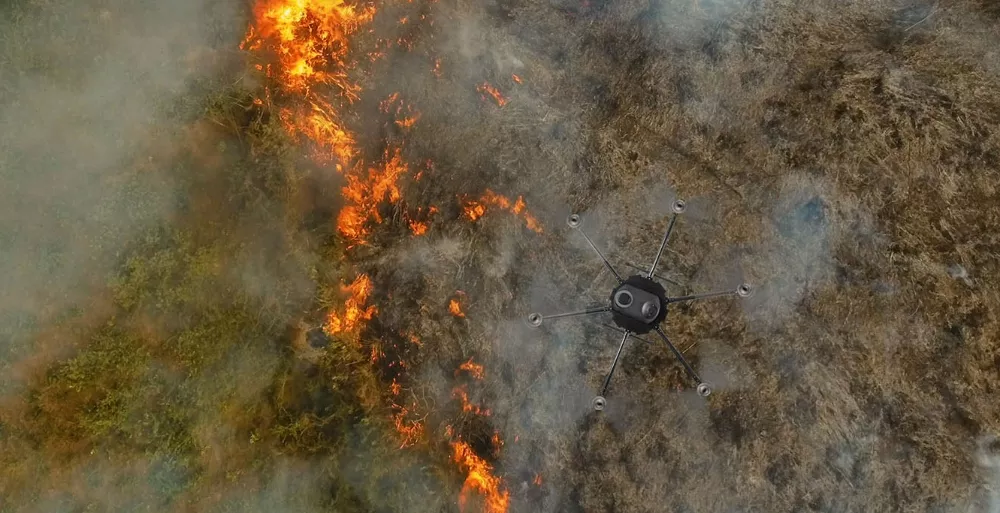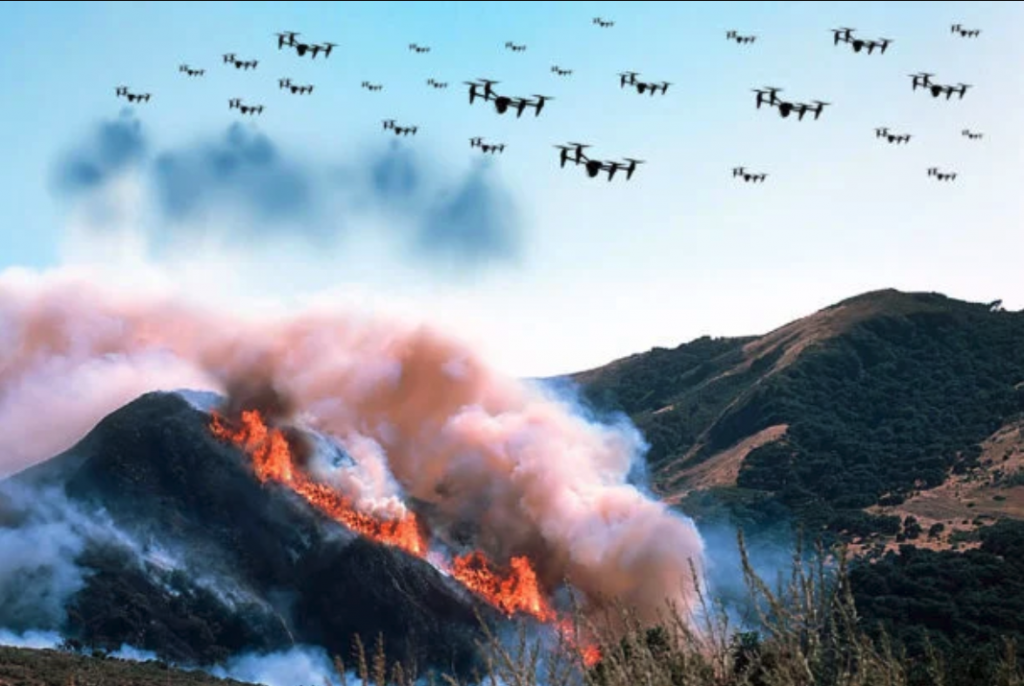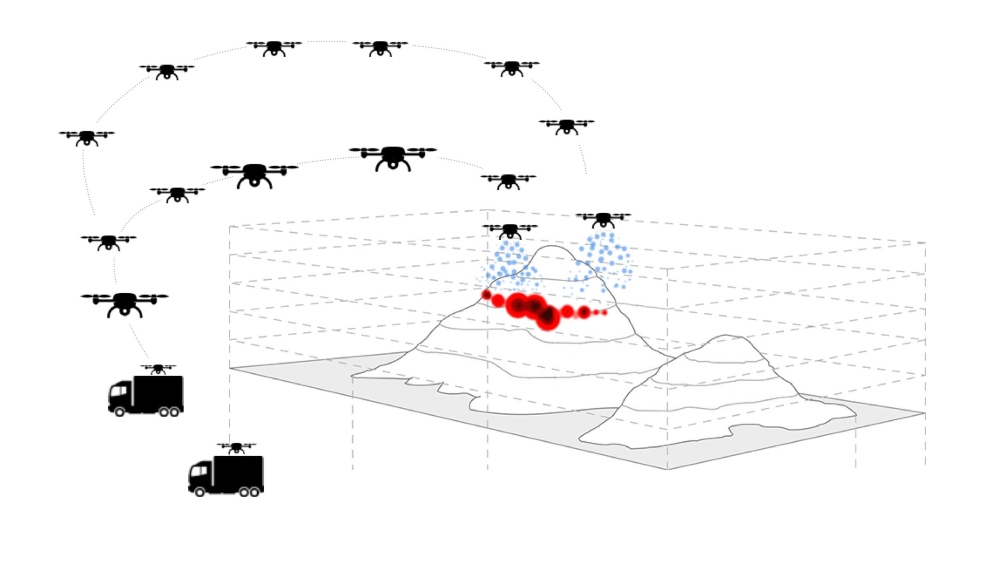New drone fire extinguishing method, drone group fire extinguishing Leave a comment
The most common use of drones in firefighting is to provide information. By flying over active wildfires or burning buildings, drones can pass visual and thermal data back to firefighters on the ground through real-time feeds, and these data are essential to help extinguish fires in real time.

UAVs are also commonly used to collect visual data after a fire, and can be used to create orthogonal or 3D models of fire consequences to help arson investigators determine the cause of the fire.
But Italian researchers recently proposed another way that drones can help extinguish fires: use them to drop water or other “extinguishing fluids” onto the flames.
Some drone companies have conducted experiments for this, using a single large drone to send a fire hose or a large bucket of water into the air. But these applications have not really started, mainly because they are not so practical.
The main difference between these tests and the new idea is the size and number of drones used.
Although a huge drone with a single load and heavy load may not have much impact on the fire, a group of small drones may have a significant impact.
How to put out a fire in a drone swarm

The drone swarm fire extinguishing method is specifically used to extinguish forest fires. The idea is that a large group of drones will produce a continuous liquid barrage, essentially like artificial rain.
Drones flocked in groups during fire fighting activities. It will operate as a single network in a grid mode to ensure complete coverage of the target area.
Although it is possible to use manned aircraft (for example, helicopters and airplanes) to drip water on active fires, drones still have some advantages:
·Strong flexibility. UAVs are more flexible in terms of take-off and landing positions.
· Deployment speed. Compared with manned aircraft, drones can deploy faster and respond faster.
· Fewer operating restrictions. Drones can operate at night or during the day, and can fly without being affected by visibility problems.
· customizable. The drone can be customized according to the specific situation-that is, you can zoom in or out of the swarm according to the firepower of the battle.
· There is no danger to life. If you don’t let the pilot extinguish the fire in the air, then you will not risk your life.
· There is no refueling restriction. UAVs that use fire extinguishing fluid instead of water do not need a water tank nearby.
The last point is also the most important point.
The ability of a manned aircraft to catch fire may be severely restricted due to its proximity to a gas station. If the nearest station is far away, the aircraft can only perform so many water droplets on the fire per hour, which limits the overall effectiveness of the aircraft in extinguishing it.
On the other hand, drones equipped with fire extinguishing fluid can quickly refuel on site and return to the air without wasting extra time to replenish water.
test ideas
With the idea of rain on the UAV swarm simulate wildfire sounds good, but actually work? In order to prove its effectiveness, the researchers used a predictive model that calculated how the fire spread through the bushes in the Mediterranean region.
Researchers estimated the model to estimate how many feet of fire can be extinguished by drones, and calculated it based on the number of drones and the amount of extinguishing fluid carried by each aircraft.
